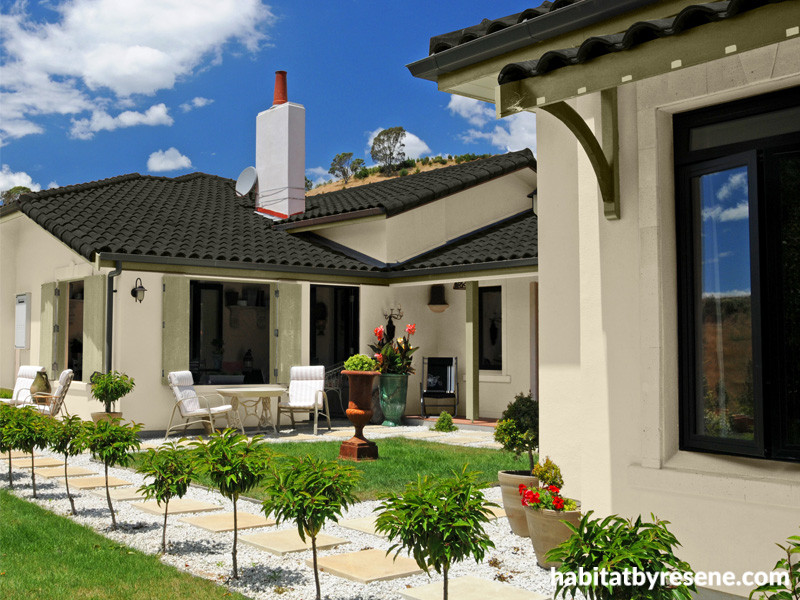
House maintenance: you’ve just gotta do it
01 Sep 2015
When you’re busy and the budget is under pressure, it’s all too easy to put off doing maintenance around the house. While not all house maintenance is essential, some certainly is and to defer it is to do so at your peril. It’s like going to the dentist. Deal with it before the problem turns into a large and expensive hole.
By and large, essential maintenance is about keeping water out and your home warm and dry. So when deciding what you can afford to leave until funds are available versus what simply cannot be ignored, think no further than subfloors, windows, doors, roofs and gutters; all places where damp can penetrate causing damage to the structure and discomfort to the inhabitants. All of these can be maintained by a handyperson without complicated equipment and with common sense safety precautions.
Subfloors
According to BRANZ research about 40 litres of water evaporates from the soil under the average house every day, and much of it gets there by draining off driveways or parking areas. If this cannot drain or evaporate harmlessly to the outside, the floors above will be damp and cold, and eventually the foundation fasteners will rust, timber will decay and mould will grow.
• Ensure that surface water is diverted away from the house.
• Do not let soil or plants block subfloor ventilation grills.
• Any soil that’s backed up against exterior cladding must be dug away and held back by a retaining wall.
Wooden joinery
Windows and doors, and the putty that keeps the glass sealed against water creep, are one of the first things to deteriorate and yet one of the easiest to care for. It’s best to stick to light colours when painting joinery so that heat build-up and therefore stress on the timber is minimised. If you want to use a darker colour use a Resene CoolColour variant which will help to reflect more heat.
If the putty has cracked and hardened, scrape it out and replace it. Leave it to cure – putty is oily so needs to form a skin and then be primed with an oil-based primer/undercoat, such as Resene Enamel Undercoat, before you can paint it – and then repaint.
Sand any flaking paint off the timber, fill any dents or holes and repaint with a compatible Resene paint system. Any bare wood must be primed, then undercoated before two topcoats are applied. Traditionally, solventborne paints were preferred for use on joinery but new technology means that waterborne enamels, such as Resene Enamacryl gloss and Resene Lustacryl semi-gloss, now do a great job.
Roofs
Concrete tile and corrugated iron are the most common types of roof cladding in this country, and are prone to failure in different ways. As the source of leaks is often notoriously hard to detect it is important to eliminate all the obvious causes.
Valley trays in concrete tile roofs are the galvanised iron ‘drains’ between different roof angles. If these are not wide enough they can block with leaves and overflow sideways. If this is the case, keep them clear but also consider getting them replaced as part of a long term upgrading programme.
If the concrete ridgeline holding the top row of tiles in place has broken down, get this replaced by a concrete plasterer and then reposition the tiles.
Older iron roofs were nailed, not screwed, so nails can rust or work loose over time. If your roof is not too steep or high, it pays to replace loose nails with roofing screws, and patch over the top of these. Replace roof areas where there are cracks, holes or severe corrosion.
Apply two coats of Resene Summit Roof, priming where required where bare iron has been exposed. Ensure any rust is treated – refer to your local Resene ColorShop for advice. For maximum protection, especially if the roof is close to the sea or harsh environmental conditions, prime with a specialist roof primer, such as Resene Galvo One or Resene Galvo-Prime. Resene Galvo One is recommended for badly weathered or very exposed roofing. Always take extra care with safety when you’re working on roof areas.
Gutters
Blocked gutters and overflowing downpipes are conduits for water to work its way into places it shouldn’t be. If you live near trees, you need to clear gutters at least once a year, and if it’s a flowering tree, after the flowers have shed as well. While this is definitely a job a handyperson can attempt on a single storey house, you must follow ladder safety precautions and turn off the electricity to the house. Do not under any circumstances attempt to work around live wires, or on a wet roof.
• Buy a gutter-shaped shovel from a hardware shop.
• Shovel either from the ladder or from the roof depending on pitch. Do not over reach.
• Consider protecting gutters with an appropriate grill or guard system.
Cladding
All houses, whether they be weatherboard, plaster, concrete or fibre cement, require regular washing, sanding and repainting. As with all decorating jobs, the longevity and look of the final job depends on the care and time put into the preparation, and the use of correct products and technique.
A well-painted house should not need repainting for 10 years – although homes near the sea may need more frequent attention. The need to repaint is dependent on exposure and how well you
maintain your home. Home exteriors should be washed annually with an appropriate cleaning product, such as Resene Paint Prep and Housewash. Some colours are naturally more durable than others and will retain their colour longer. Even when the colour has faded or lightly chalked, the paint system may still be sound even though the colour has changed.
Do not use water blasters on weatherboard houses as water can be driven under the boards and into the insulation or wall linings. There are many specialist firms who can wash the house for you.
Scrape off flaking paint and sand until smooth using increasingly fine grades of sand paper. If you are repainting an older home, the previous paint finish may contain lead. Until around 1965, many paints had high lead levels. Even if a building has been recently painted, it may have been painted with lead-based paints or have layers of old paint covered by modern paint. If you suspect the paint on your home may be lead based, get it tested before you start working on it. Lead based test kits are available from Resene ColorShops. If you find the paint is lead based, see the Resene Putting your safety first brochure for advice. Lead based paint can result in harm to the people doing the job, the people who live or work nearby and the environment.
When it comes to repainting, you will need to treat any moss, mould and algae with Resene Moss & Mould Killer, clean down the surface, sand and prime/undercoat where needed. Fill any little holes or cracks that have been exposed by the undercoat. Apply two coats of exterior paint in the sheen level desired, such as Resene Sonyx 101 semi-gloss or Resene Lumbersider low sheen then sit back, relax and enjoy your well maintained home.
Published: 01 Sep 2015




